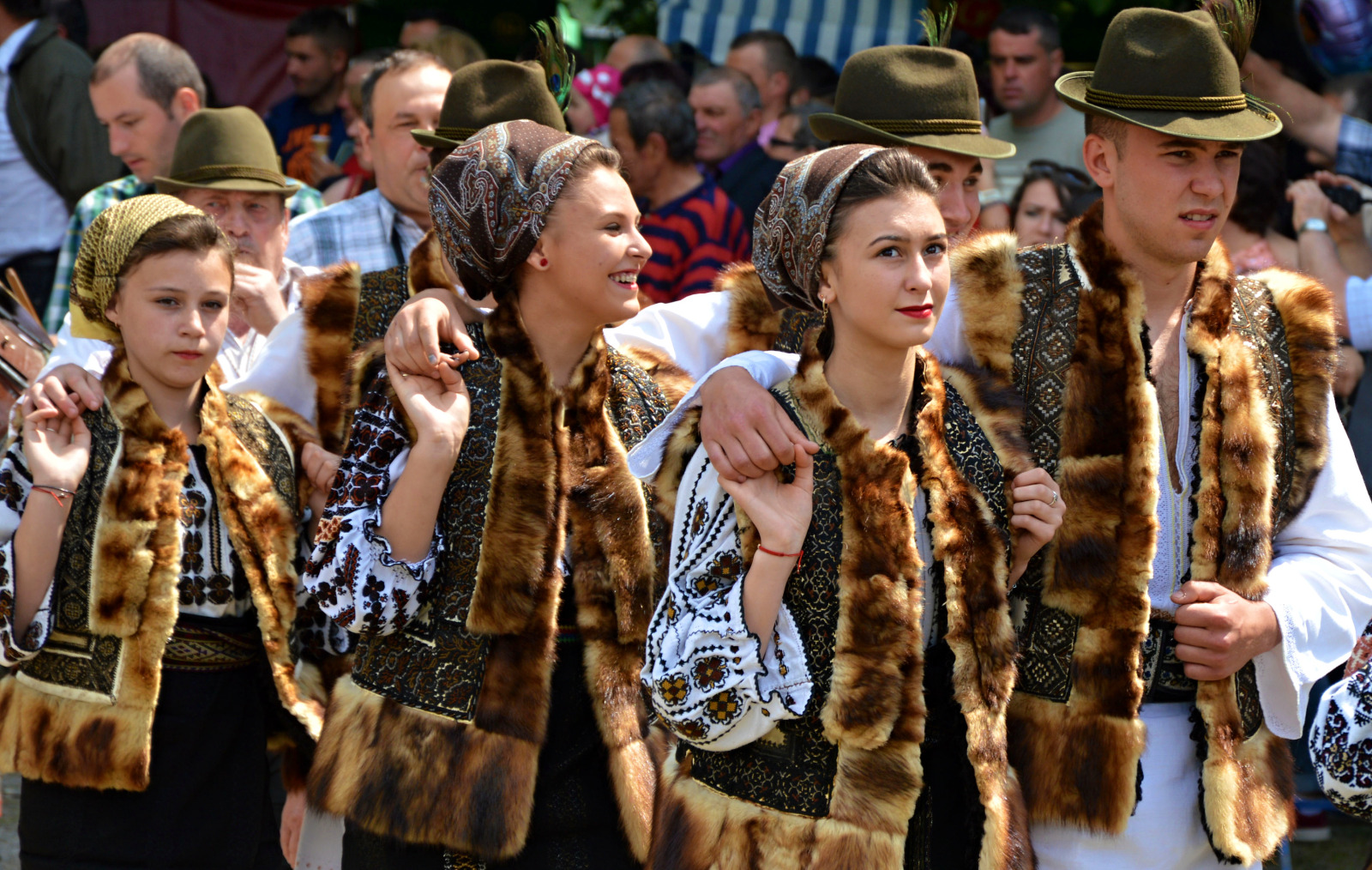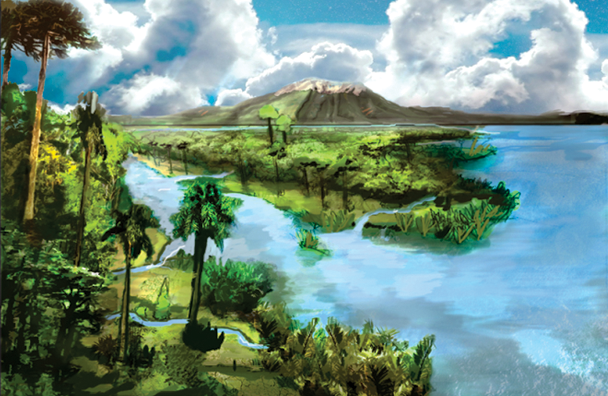|
Uriash
''Uriash'' is a genus of titanosaurian sauropod dinosaur from the Late Cretaceous (Maastrichtian) of Romania. The holotype of this genus was originally referred to ''Magyarosaurus hungaricus'', which is now classified in a separate genus, '' Petrustitan''. Discovery and naming In 1914, the Hungarian geologist Ottokár Kadić in the Pârâul Budurone ravine near Vălioara, discovered a skeleton of a sauropod which was markedly larger than previously found sauropod remains in the area. In 1916, the discovery, consisting of limb bones and eight vertebrae, was reported in the scientific literature. By 12 January 1927 two vertebrae had been sent to Friedrich von Huene at the University of Tübingen. Von Huene described these in 1932, preliminary referring them to a ?''Magyarosaurus hungaricus'', presently ''Petrustitan''. In 2021 the site was rediscoveredBotfalvai, G., Csiki-Sava, Z., Kocsis, L., Albert, G., Magyar, J., Bodor, E.R., Ţabara, D., Ulyanov, A., & Makadi, L. 2021. "‘X ... [...More Info...] [...Related Items...] OR: [Wikipedia] [Google] [Baidu] |
2025 In Archosaur Paleontology
This article records new taxa of fossil Archosaur, archosaurs of every kind that are scheduled Binomial nomenclature, described during the year 2025, as well as other significant discoveries and events related to paleontology of archosaurs that are scheduled to occur in the year 2025. Pseudosuchians New pseudosuchian taxa General pseudosuchian research * Fitch, Kammerer & Sterling Nesbitt, Nesbitt (2025) describe Femur, femora of Poposauroidea, poposauroids similar to ''Poposaurus, Poposaurus gracilis'' from the Cumnock Formation, Cumnock and Pekin Formation, Pekin formations (Chatham Group; North Carolina, United States), expanding known geographical range of Late Triassic poposauroids. * McDavid (2025) discusses the validity and authorship of the name ''Prestosuchus'', considering the name ''Huenesuchus'' a junior synonym. Aetosaur research * A study on the histology of osteoderms of ''Stagonolepis, Stagonolepis olenkae'' is published by Błaszczeć & Antczak (2025). ... [...More Info...] [...Related Items...] OR: [Wikipedia] [Google] [Baidu] |
Petrustitan
''Petrustitan'' is a eutitanosaurian sauropod dinosaur from the Late Cretaceous (Maastrichtian) of Romania. The type and only species is ''P. hungaricus'', originally assigned to the genus '' Magyarosaurus''. History of discovery In 1932, Friedrich von Huene erected the genus '' Magyarosaurus'' and assigned three species based on sauropod specimens recovered from the Sânpetru Formation: ''M. dacus'' (the type species), ''M. hungaricus'' and ''M. transsylvanicus''.von Huene, F. (1932). "Die fossile Reptil-Ordnung Saurischia, ihre Entwicklung und Geschichte." ''Mong. Geol. Pal.'', 4(1) pts. 1 and 2, viii +361 pp. However, subsequent analyses considered only ''M. dacus'' as a valid species of ''Magyarosaurus'', with "''M.''" ''transsylvanicus'' representing a chimera and partially a junior synonym of ''M. dacus'', and with "''M.''" ''hungaricus'' representing a distinct genus. In 2025, Díez Díaz and colleagues reassigned "''M.''" ''hungaricus'' to a new genus ''Petrustitan'' ... [...More Info...] [...Related Items...] OR: [Wikipedia] [Google] [Baidu] |
Maastrichtian
The Maastrichtian ( ) is, in the International Commission on Stratigraphy (ICS) geologic timescale, the latest age (geology), age (uppermost stage (stratigraphy), stage) of the Late Cretaceous epoch (geology), Epoch or Upper Cretaceous series (stratigraphy), Series, the Cretaceous geologic period, Period or system (stratigraphy), System, and of the Mesozoic geologic era, Era or Erathem. It spanned the interval from . The Maastrichtian was preceded by the Campanian and succeeded by the Danian (part of the Paleogene and Paleocene). It is named after the city of Maastricht, the capital and largest city of the Limburg (Netherlands), Limburg province in the Netherlands. The Cretaceous–Paleogene extinction event (formerly known as the Cretaceous–Tertiary period, Tertiary extinction event) occurred at the end of this age. In this extinction event, mass extinction, many commonly recognized groups such as non-avian dinosaurs, plesiosaurs and mosasaurs, as well as many other lesser-kn ... [...More Info...] [...Related Items...] OR: [Wikipedia] [Google] [Baidu] |
Folklore Of Romania
The folklore of Romania is the collection of traditions of the Romanians. A feature of Culture of Romania, Romanian culture is the special relationship between folklore and the learned culture, determined by two factors. First, the rural character of the Romanian communities resulted in an exceptionally vital and creative traditional culture. Folk creations (the best known is the ballad Miorița) were the main literary genre until the 18th century. They were both a source of inspiration for cultivated creators and a structural model. Second, for a long time learned culture was governed by official and social commands and developed around courts of princes and boyars, as well as in monasteries. Overview Creation of the world Stories suggest God made the Earth with the help of animals, while Satan, the Devil was trying to thwart his plans.Cosma, Aurel. ''Cosmogonia poporului român'' (The Cosmogony of the Romanian People) (1942). Bucharest: Tipografia Ziarului "Universul".Leemin ... [...More Info...] [...Related Items...] OR: [Wikipedia] [Google] [Baidu] |
Hațeg Fauna
Hațeg (; ; ) is a town in Hunedoara County, Romania with a population of 8,793 as of 2021. Three villages are administered by the town: Nălațvad (''Nalácvád''), Silvașu de Jos (''Alsószilvás''), and Silvașu de Sus (''Felsőszilvás''). It is situated in the southwestern reaches of the historical region of Transylvania. The town is the center of the ethnocultural and historical region of Țara Hațegului. It lies at an altitude of , on the banks of the Râul Galben. Hațeg is located in the south-central part of Hunedoara County, south of the county seat, Deva. Hațeg Island, a large island that existed in the Tethys Ocean during the late Cretaceous period and the giant pterosaur that lived on the island, Hatzegopteryx are named after the town. History Hațeg is mentioned for the first time in the Diploma of the Joannites of 1247 as a possession of Vlach voivode Litovoi, granted from King Béla IV of Hungary. In 1360 it is mentioned as the seat of a Romanian d ... [...More Info...] [...Related Items...] OR: [Wikipedia] [Google] [Baidu] |
Maastrichtian Dinosaurs
The Maastrichtian ( ) is, in the International Commission on Stratigraphy (ICS) geologic timescale, the latest age (uppermost stage) of the Late Cretaceous Epoch or Upper Cretaceous Series, the Cretaceous Period or System, and of the Mesozoic Era or Erathem. It spanned the interval from . The Maastrichtian was preceded by the Campanian and succeeded by the Danian (part of the Paleogene and Paleocene). It is named after the city of Maastricht, the capital and largest city of the Limburg province in the Netherlands. The Cretaceous–Paleogene extinction event (formerly known as the Cretaceous–Tertiary extinction event) occurred at the end of this age. In this mass extinction, many commonly recognized groups such as non-avian dinosaurs, plesiosaurs and mosasaurs, as well as many other lesser-known groups, died out. The cause of the extinction is most commonly linked to an asteroid about wide colliding with Earth, ending the Cretaceous. Stratigraphic definitions Definition ... [...More Info...] [...Related Items...] OR: [Wikipedia] [Google] [Baidu] |
Dinosaur Genera
Dinosaurs are a diverse group of reptiles of the clade Dinosauria. They first appeared during the Triassic Geological period, period, between 243 and 233.23 million years ago (mya), although the exact origin and timing of the #Evolutionary history, evolution of dinosaurs is a subject of active research. They became the dominant terrestrial vertebrates after the Triassic–Jurassic extinction event 201.3 mya and their dominance continued throughout the Jurassic and Cretaceous periods. The fossil record shows that birds are feathered dinosaurs, Evolution of birds, having evolved from earlier Theropoda, theropods during the Late Jurassic epoch, and are the only dinosaur lineage known to have survived the Cretaceous–Paleogene extinction event approximately 66 mya. Dinosaurs can therefore be divided into avian dinosaurs—birds—and the extinct non-avian dinosaurs, which are all dinosaurs other than birds. Dinosaurs are varied from taxonomy (biology), taxonomic, ... [...More Info...] [...Related Items...] OR: [Wikipedia] [Google] [Baidu] |
Titanosauria
Titanosaurs (or titanosaurians; members of the group Titanosauria) were a diverse group of Sauropoda, sauropod dinosaurs, including genera from all seven continents. The titanosaurs were the last surviving group of long-necked sauropods, with taxa still thriving at the time of the Cretaceous–Paleogene extinction event, extinction event at the end of the Cretaceous. This group includes some of the Largest land animal, largest land animals known to have ever existed, such as ''Patagotitan'', estimated at long with a mass of , and the comparably-sized ''Argentinosaurus'' and ''Puertasaurus'' from the Patagonia, same region. The group's name alludes to the mythological Titan (mythology), Titans of ancient Greek mythology, via the type genus (now considered a ''nomen dubium)'' ''Titanosaurus''. Together with the Brachiosauridae, brachiosaurids and relatives, titanosaurs make up the larger sauropod clade Titanosauriformes. Titanosaurs have long been a poorly-known group, and the rela ... [...More Info...] [...Related Items...] OR: [Wikipedia] [Google] [Baidu] |
Abditosaurus
''Abditosaurus'' (meaning "forgotten lizard") is an extinct genus of titanosaurian sauropod dinosaur from the Late Cretaceous (Maastrichtian) Tremp Group of Catalonia, Spain. The type and only species is ''Abditosaurus kuehnei''. Phylogenetic analyses recover it within a clade of South American and African saltasaurines, distinct from other insular dwarf sauropods from the European archipelago. ''Abditosaurus'' inhabited the Ibero-Armorican Island, a prehistoric island made up of what is now Spain, Portugal, and southern France, and would have been the largest titanosaur species in its environment. History of study While prospecting for fossil mammals in 1954, German paleontologist Walter Georg Kühne on 25 September discovered the remains of a large titanosaur at the Orcau-1 locality of the Conques Formation of Catalonia, Spain. It was the first major sauropod find in Spain. During the initial two weeks of excavation Kühne managed to identify around ten bones, some of which ... [...More Info...] [...Related Items...] OR: [Wikipedia] [Google] [Baidu] |
Holotype
A holotype (Latin: ''holotypus'') is a single physical example (or illustration) of an organism used when the species (or lower-ranked taxon) was formally described. It is either the single such physical example (or illustration) or one of several examples, but explicitly designated as the holotype. Under the International Code of Zoological Nomenclature (ICZN), a holotype is one of several kinds of name-bearing types. In the International Code of Nomenclature for algae, fungi, and plants (ICN) and ICZN, the definitions of types are similar in intent but not identical in terminology or underlying concept. For example, the holotype for the butterfly '' Plebejus idas longinus'' is a preserved specimen of that subspecies, held by the Museum of Comparative Zoology at Harvard University. In botany and mycology, an isotype is a duplicate of the holotype, generally pieces from the same individual plant or samples from the same genetic individual. A holotype is not necessarily "ty ... [...More Info...] [...Related Items...] OR: [Wikipedia] [Google] [Baidu] |








